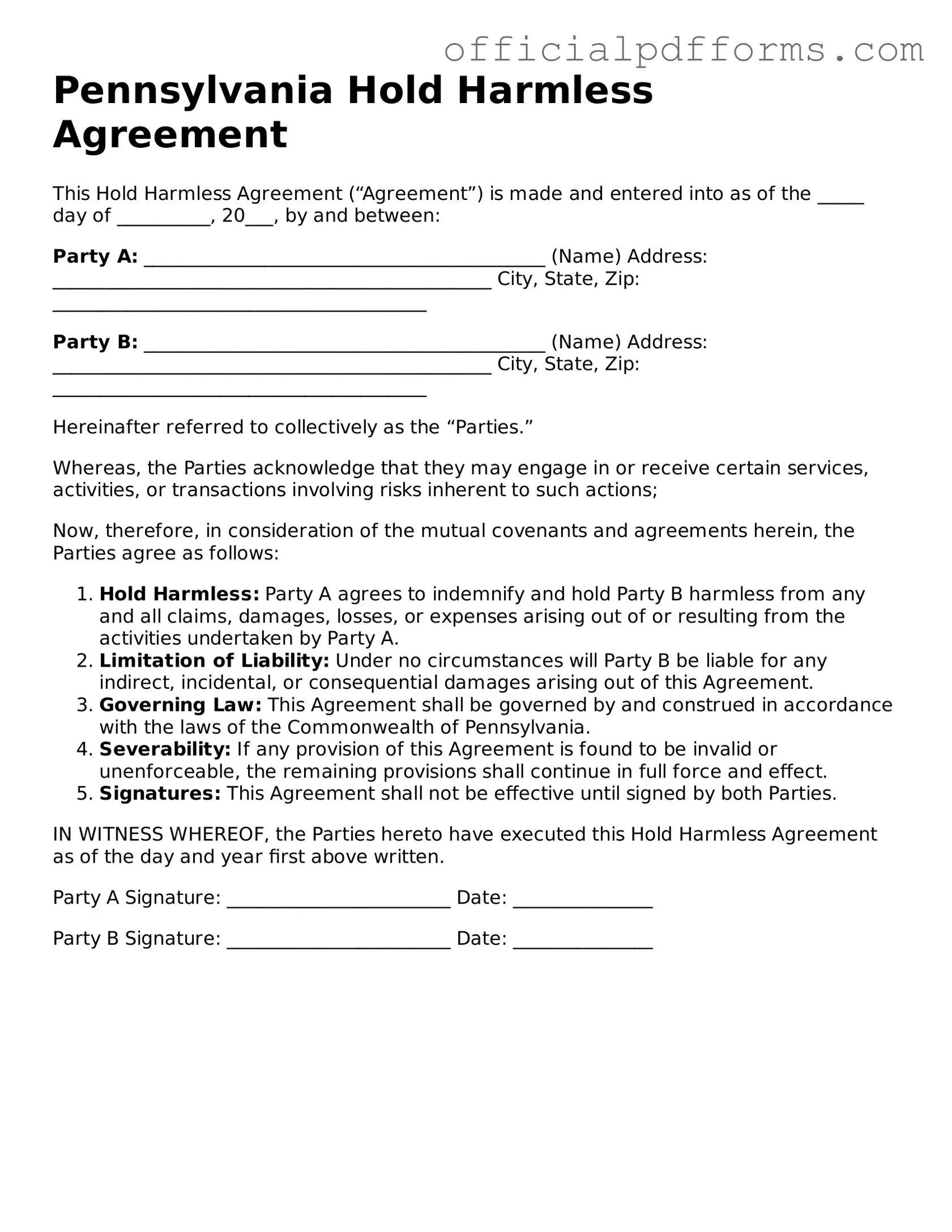What is a Hold Harmless Agreement in Pennsylvania?
A Hold Harmless Agreement is a legal document that protects one party from liability for any damages or injuries that may occur during a specific activity or event. In Pennsylvania, this agreement is often used in various contexts, such as construction projects, rental agreements, and events where one party may be exposed to risks. By signing this agreement, the party agrees not to hold the other party responsible for certain liabilities.
Who typically uses a Hold Harmless Agreement?
Various individuals and organizations use Hold Harmless Agreements. Common users include:
-
Contractors and subcontractors in construction projects.
-
Event organizers and venues hosting activities.
-
Landlords and tenants in rental agreements.
-
Businesses engaging in partnerships or collaborations.
Essentially, anyone looking to mitigate their risk in a contractual relationship may find this agreement beneficial.
What are the key components of a Hold Harmless Agreement?
A Hold Harmless Agreement typically includes several important components:
-
Identification of Parties:
Clearly states who is involved in the agreement.
-
Scope of Activities:
Defines the specific activities or events covered by the agreement.
-
Liability Waiver:
Outlines the extent to which one party waives their right to hold the other liable for damages.
-
Indemnification Clause:
Specifies that one party will compensate the other for any losses incurred.
-
Signatures:
Requires signatures from all parties involved to make the agreement binding.
Is a Hold Harmless Agreement legally binding in Pennsylvania?
Yes, a Hold Harmless Agreement can be legally binding in Pennsylvania, provided it meets certain criteria. The agreement must be clear, voluntary, and signed by all parties. However, it's important to note that courts may not enforce certain provisions if they are deemed unconscionable or if they violate public policy. Consulting with a legal professional can ensure that the agreement is properly drafted and enforceable.
Can a Hold Harmless Agreement protect against gross negligence?
Generally, Hold Harmless Agreements do not protect against gross negligence or willful misconduct. If a party acts recklessly or intentionally causes harm, the agreement may not be enforceable in those situations. It’s crucial to understand the limits of liability and to seek legal advice if you have concerns about specific circumstances.
How do I create a Hold Harmless Agreement?
Creating a Hold Harmless Agreement involves several steps:
-
Identify the parties:
Clearly define who is involved.
-
Specify the activities:
Detail the events or activities covered by the agreement.
-
Draft the terms:
Include the liability waiver and indemnification clauses.
-
Review:
Have the agreement reviewed by a legal professional to ensure it meets all legal standards.
-
Sign:
Ensure all parties sign the document to make it binding.
Taking these steps can help ensure that the agreement is effective and protects the interests of all parties involved.
Where can I find a template for a Hold Harmless Agreement?
Templates for Hold Harmless Agreements can often be found online through legal websites, local government resources, or legal aid organizations. However, using a template is just a starting point. It’s advisable to customize the agreement to fit your specific situation and consult with a legal professional to ensure it complies with Pennsylvania law.
